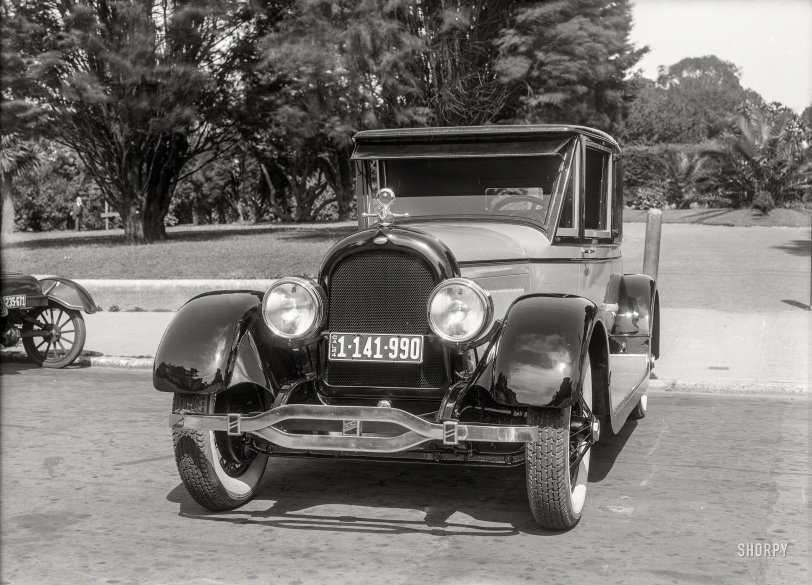


Framed or unframed, desk size to sofa size, printed by us in Arizona and Alabama since 2007. Explore now.
Shorpy is funded by you. Patreon contributors get an ad-free experience.
Learn more.

- Tough Guys
- Lost in Toyland
- And without gloves
- If I were a blindfolded time traveler
- Smoke Consumer Also Cooks
- Oh that stove!
- Possibly still there?
- What?!?
- $100 Reward
- Freeze Frame
- Texas Flyer wanted
- Just a Year Too Soon
- WWII -- Replacing men with women at the railroad crossing.
- Yes, Icing
- You kids drive me nuts!
- NOT An Easy Job
- I wonder
- Just add window boxes
- Icing Platform?
- Indiana Harbor Belt abides
- Freezing haze
- Corrections (for those who care)
- C&NW at Nelson
- Fallen Flags
- A dangerous job made worse
- Water Stop
- Passenger trains have right of way over freights?
- Coal
- Never ceases to amaze me.
- Still chuggin' (in model form)
Print Emporium
Drivers Wanted: 1924

San Francisco, 1924. "Marmon coupe at Golden Gate Park." Equipped with a Biflex bumper. Latest exhibit in the Shorpy Diorama of Defunct Dreadnoughts. 5x7 glass negative by Christopher Helin. View full size.
License plate
That gem of a license plate had a green background with white numbers. The pair in near-mint condition today would bring over a hundred dollars; bunged up, perhaps half.
All Early Tires
Were made of white rubber. The tires didn't last long because white rubber is very soft and wears out fast. Eventually it was discovered that if carbon was added to the rubber, it made the rubber a lot more durable. Tire treads were then made of black rubber, and the sidewalls were white on both sides. It was thought that the white rubber stayed cooler than the black, adding to tire life. Double sided whitewalls were common until the late 1930's, as evidenced by car ads of the time. After that, tires were either all black, or with a whitewall on only one side.
Whitewalls
Judging from what can been seen here, it appears the tires may have been whitewall on both sides. Was that ever a standard practice?
Love the radiator cap/temperature gauge.
Bi-
And also fitted with the very practical bi-sided white wall tires.
























On Shorpy:
Today’s Top 5